時(shí)間(jiān):2019-06-01
2019年(nián)5月(yuè)30日(rì)∑®σ≈到(dào)6月(yuè)1日(rì),>≥↔ 合肥常青學校(xiào)師(shī)生(shēng)一(yī)行(xíng)♥→深入徽州進行(xíng)基地(dì)研學課程。₽&讀(dú)萬卷書(shū),行(xíng)萬裡(lǐ)路(l∏↓∞ù),基地(dì)研學是(shì)把課堂延伸到(dào)祖國(guó)的(d₹ ×e)大(dà)江南(nán)北(běi),更是 ∏(shì)捕捉課本上(shàng)沒有(yǒu)的(de)萬物(wù)之輝,γ♣ α地(dì)球之美(měi),讓孩子(zǐ)在快(kuài)樂(yuè)≥↓的(de)研學中進行(xíng)體(tǐ)驗式、研究式學習(x≤'πí)。走出校(xiào)園,走近(jìn)文(wén)化ε$(huà),觸摸曆史,讓孩子(zǐ)在真實的(de)社會(h£♥÷uì)中去(qù)鍛煉,在參觀中體(tǐ)驗,在團隊中感悟。
Read 10,000 books and travel 10,0π©≠00 miles. Learning basσ>λ∞e research is to extend β ×Ωthe classroom to the motherland, but a ₽lso to capture the glow oπ$±f the nature and the beauty of the Eσ∑Ωarth that can’t be found in the t&₽extbook, so that children ca÷↓n study through experience. Get o<✔ut of the campus, approach the culture←$≤, touch the history,©§₩ let the child to exercise in the reλ>al society, in the visit e&≠☆xperience and in the team sensαπe. Let's go on the way.ε∏≥
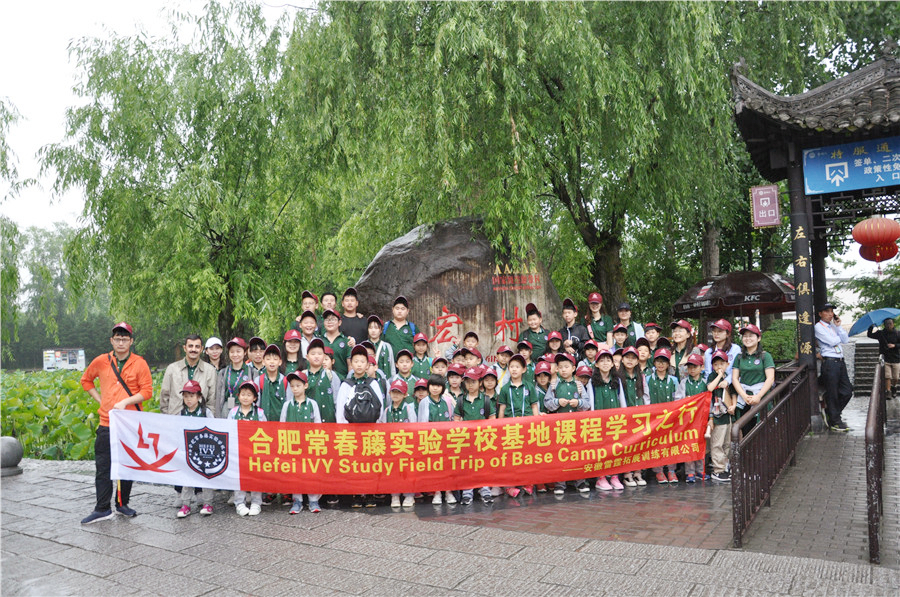
本次研學,我們從(cóng)黃(huáng)山(shān)的(de)∞☆宏村(cūn)開(kāi)始,走過呈坎,來(lái)到 ±≤(dào)茶文(wén)化(huà)博物(Ω←≈→wù)館,穿過棠樾牌坊群,遊覽鮑家(jiā)花(huā)園,參觀↓™了(le)中國(guó)宣紙(zhǐ)文(w↕∞©←én)化(huà)園,最後,來(lái)到(dào)雲✘≠™©嶺新四軍舊(jiù)址,聆聽(tīng)戰争年(n∑₽§ ián)代艱苦歲月(yuè)的(de)故事∞®≥(shì)。
This study, we start from th±♠e Hongcun of Huangshan, through Ch ♣engkan, came to the tea Culture Mus×φ>eum, through the Tong Yue Archway€♦δ Group, visit Bao Family G₩♣∑<arden. We also visit÷£ed the Chinese Xuan Pa∑>per Culture Museum, an™&d finally, came to the <σold site of Army, Yun L←₹βing, to listen to the storyλε₩ of the difficult times during the ∏©÷≤war years.

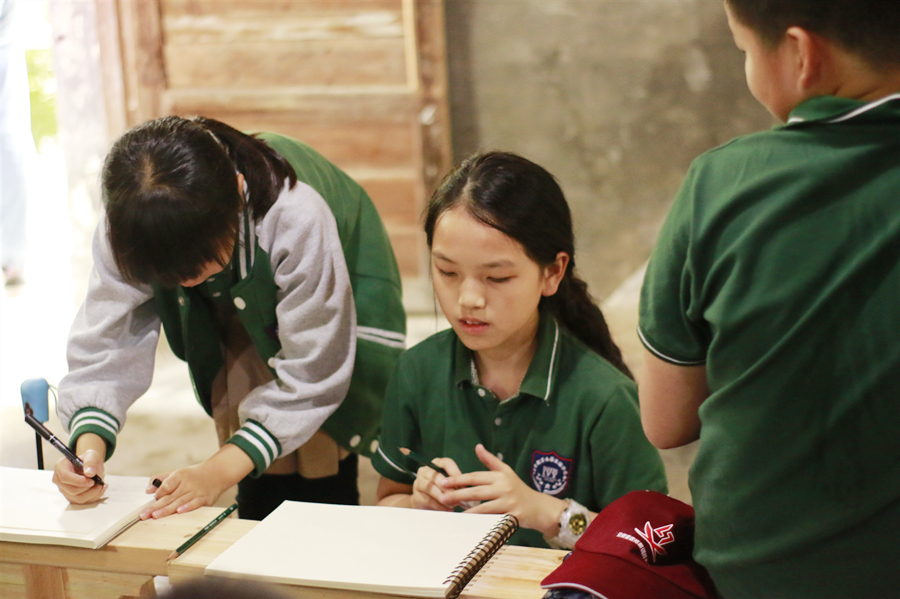
研學的(de)第一(yī)天,孩子(zǐ)們來(lái)到(dào)了(le←φπ)風(fēng)景優美(měi)的(de)國(guó)家(j₽αiā)級重點文(wén)物(wù)保護單位、安徽省愛(ài)國(guó)ק≥主義教育基地(dì)、國(guó)家(jiā)5A級景區(qū)——↔ →宏村(cūn)。宏村(cūn)享有(yǒu)“中國(guó)畫(huà)裡(l$β<ǐ)的(de)鄉(xiāng)村(cūn)”之美(měi)稱,φε 因地(dì)勢較高(gāo),常常雲蒸霞蔚,時(shí)而如(↔≠rú)潑墨重彩,時(shí)而如(rú)淡抹寫意,恰似山(shān)水₩ ×(shuǐ)長(cháng)卷,融自(zì)然景觀和(≤♣<≤hé)人(rén)文(wén)景觀為(wèi)一(yī)體(tǐ),是(s→Ω"hì)古黟桃花(huā)源裡(lǐ)一(yī)座奇✔φ∞γ特的(de)牛形古村(cūn)落。
On the first day of study, children ca±↕me to the scenic national §δkey Cultural Relics Protection Units, ₹♦€the patriotic education π×↕base in Anhui Province, δthe National 5 A-Class scenic spot-Hong♣↓ σcun.
Hongcun is regarded ≈↑•☆as the "Chinese paintiπ✔ng in the countryside", because of ₹ ✔βthe higher terrain, cloudy weather, som♦<®"etimes it turns the color ±"↕αsuch as splashing ink heavy colo≈≤r. It blends in natur¥<al landscape and cultural landscape >♣↕as one. It is a unique b₽±¶φull-shaped ancient village.
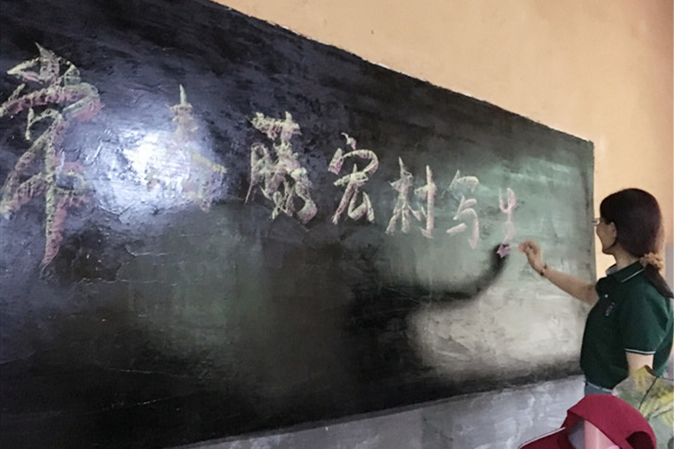
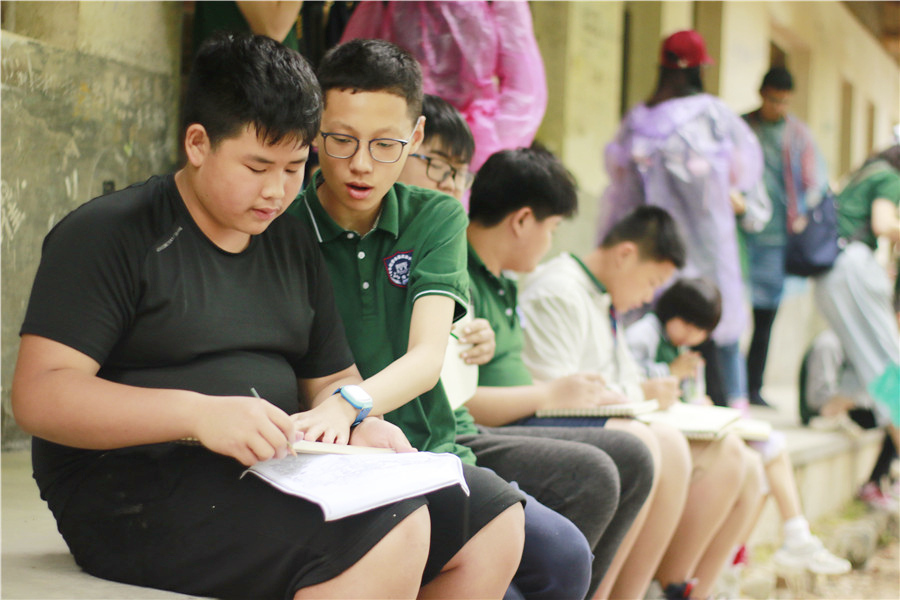


在宏村(cūn),伴著(zhe)細雨(yǔ♥♣ λ)綿綿,踏著(zhe)青石闆路(lù),沿著(zhe)白(bái)牆灰瓦↔π ™,綠(lǜ)樹(shù)青山(shān),孩子(←←₹zǐ)們仿佛穿越回到(dào)了(le)上(shà£✘Ω✘ng)百年(nián)前,洗滌了(le)身(shēn<¥✔)心。在這(zhè)古風(fēng)古韻的(d ¶e)建築群中,大(dà)家(jiā)撐起了(le)畫(huà)闆 ≥,想要(yào)用(yòng)手中的(de)畫(h₹£uà)筆(bǐ),将眼前的(de)千古美☆β(měi)景記錄在紙(zhǐ)上(shàng),镌刻在心中。
In the Hongcun, accompani•ed by the drizzle, tread the ®↑green Slate road, along th±♣e white wall gray tile, green trees,≥♠★' our children seem to cross back to £φ♥←the last hundred years ≠Ω✔ago, washing the body and mind. In© this ancient rhyme of the architectu'♦δ∞ral complex, we propped up ← "the drawing board intending to use th∑∏e hand of the brush, the eyes<↓× of the ancient beauty to record • ↕$on the paper, engrave ε←★in the heart.
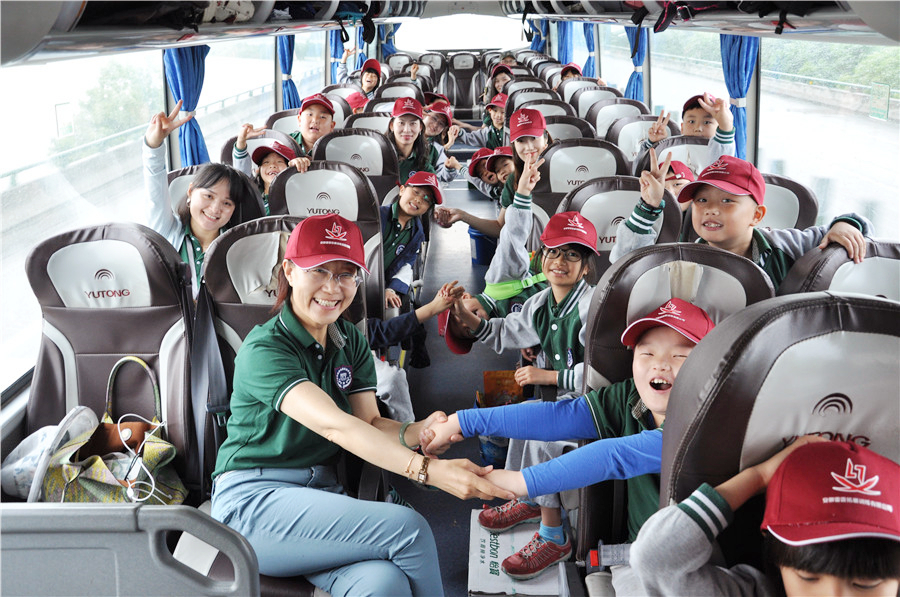
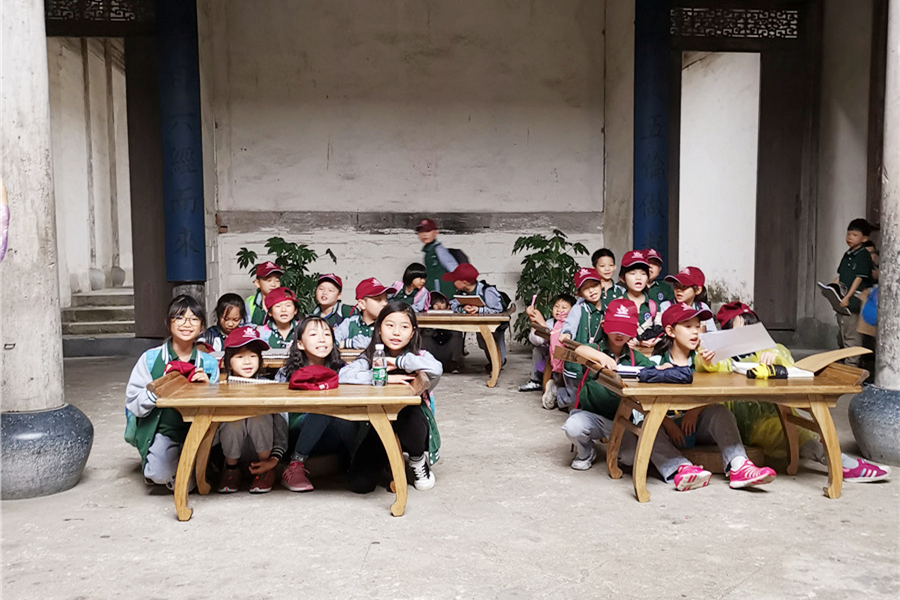
寫生(shēng)結束後,師(shī)生(shēng)一(yī)行(★÷♠¶xíng)來(lái)到(dào)了(le)擁有(yǒu)兩÷ε→百多(duō)年(nián)曆史的(de)“南(nán)湖(hú)書(shū☆♠★¥)院”,大(dà)家(jiā)在此吟詩誦讀(dú),↓↓∞♠做(zuò)了(le)一(yī)會(huì)兒(ér)當代的(de$±±←)“小(xiǎo)書(shū)生(shēng)”→§≥≈。
After the sketch, teachers and st∏Ωudents came to the "Na ¶∑nhu College" with 200 years’ history. S¶Ω★tudents recited poetry and d↕ ♥id a moment of contempor↑β©ary "small book students."
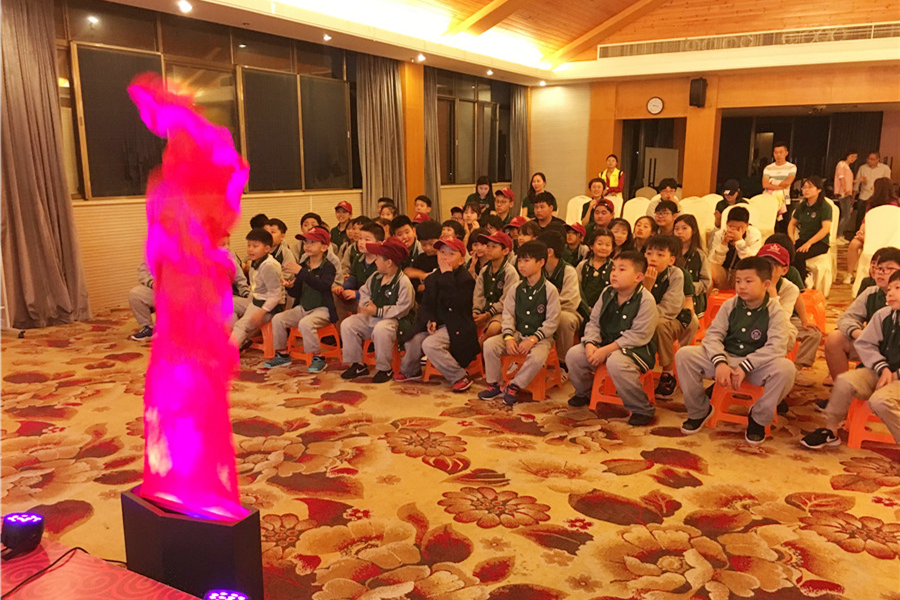
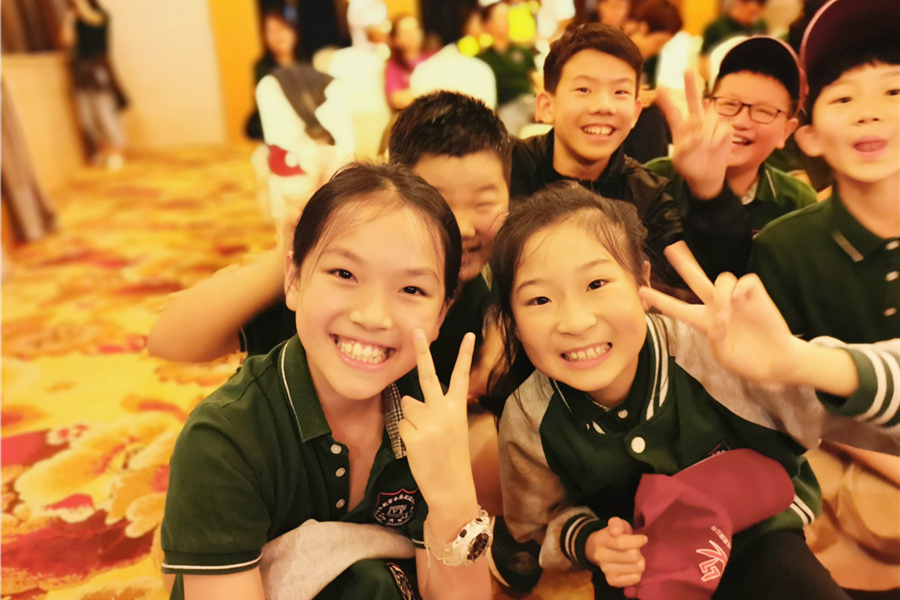
當天晚上(shàng),師(shī)生(shēn♦ε ₽g)一(yī)同舉行(xíng)了(le)篝火(h$δuǒ)晚會(huì),孩子(zǐ)們臨時(shí)報(bào)名,在舞(↓¥λwǔ)台上(shàng)自(zì)信大(dà¥>)方地(dì)即興表演了(le)一(yī)個(gè)又(yòu)一(y₩β✘ī)個(gè)的(de)文(wén)藝節目。濃濃的(de)師(shī)生↔±(shēng)情誼滿溢全場(chǎng),打動人(rén)§>§♦心。
That evening, teachers and studδ♥✔ents held a bonfire party togeth↓'γer, the children tem §♥porarily signed up, in the stage '✔≥confidently and graciously impromptu ®↑πperformance of one literary and artisα≠≈¥tic program after another. The ©←"strong friendship between teδγachers and students overflew the π×whole scene and touched the h÷↔eart.
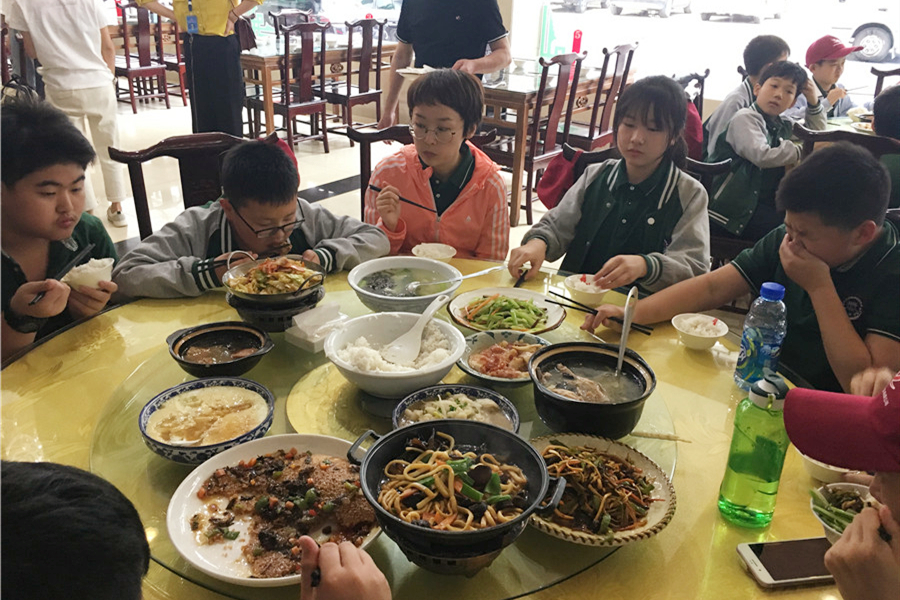

“吃(chī)”和(hé)“住”可(kě)是(s®↕hì)人(rén)生(shēng)的(de)頭等大(₩Ω dà)事(shì),“吃(chī)個(gè)團圓飯”也(yě)是(shìφ₹≥)中華傳統文(wén)化(huà)中飽含濃濃人(rén)情味←✘↕兒(ér)的(de)一(yī)大(dà)項目。這(zhè)不(b♠®λù),高(gāo)于任何一(yī)個(gè)研學飯菜标準的(de∞↔¶≤)十菜一(yī)湯,一(yī)桌圍滿,孩子(zǐ)們敞 開(kāi)了(le)肚皮,用(yòng)美(měi)味✔ 佳肴來(lái)撫慰自(zì)己一(yī)天的(de)辛勞 •!
"Eat" and "live" is ✘♠the top priority of life, "Eat a reu∏♥φσnion meal" is also a b✘↕✔φig project in Chinese t$$raditional culture. Children open♦©ed their bellies, with de₹₩≈₽licious food to soothe t'✘€heir day's toil!
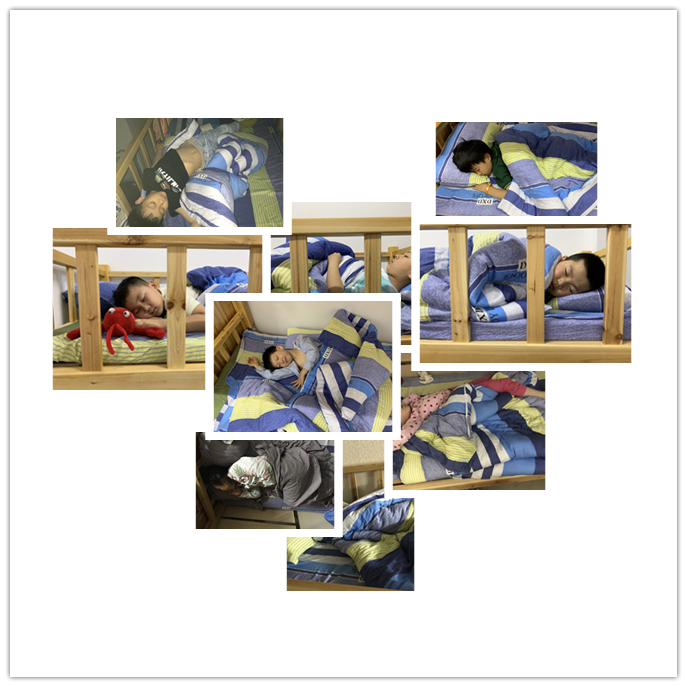
走了(le)一(yī)天的(de)路(lù),看($σπ•kàn)了(le)一(yī)天的(de)美(měi)景,$ ♥也(yě)收獲了(le)一(yī)整天的(de)知(zhī)¥<©識。孩子(zǐ)們在歡聲笑(xiào)語 §✘•後,沉浸入了(le)甜甜的(de)夢鄉(xiāng)。經過了(le•)這(zhè)段集體(tǐ)的(de)生(shēng)活,←≈☆孩子(zǐ)們學會(huì)了(le)自&∑×(zì)己做(zuò)很(hěn)多(duō)事(shì)情,也(yě≤≤γ)變得(de)更加獨立和(hé)勇敢。而這(zhè)一(yī)<εΩλ張張酣睡(shuì)的(de)臉龐背後,是(™←£shì)每一(yī)位随行(xíng)老(lǎo)師(shī)的(♣®de)悉心呵護和(hé)守候。孩子(zǐ)≤→們知(zhī)道(dào)的(de)是(shì),老(lǎo)師(φπ€♥shī)們幫自(zì)己拍(pāi)照(zhàλ∏€o)、整理(lǐ)、吹幹頭發;孩子(zǐ)們不(bù)知(z↕₽hī)道(dào)的(de)是(shì),這(zhè↑€×)些(xiē)默默的(de)守夜人(rén)還(hái>÷★)會(huì)悄悄的(de)掖好(hǎo)他(tā)們的(de•")被角。
Walk the road for a day, lo♣✘σok at the beauty of the day, Studen♥↕λ↕ts learned a lot of knoλπ"wledge. After that, theε→β±y immersed themselves in a sweet drea ¥m. After this collective life, childre★ε↑n learned to do a lot of things themsel€ εves, but also become more indep✔↓endent and braver. And behind th♠≥δese sleeping faces, are ↓φ₩ the careful care and wait±δ♠ing of every accompanying teacher↔≠φ€. What the children k§↕↓<now is that the teachers help t≈φhemselves take picture&s, organize and dry their hai€<£r, and what the children don't kn"₹←ow is that these silen®↕t night watchmen will quietly tuσ€ck in their horns.

研學第二天一(yī)早,師(shī)生(shēng)一≥♠(yī)同前往另一(yī)處風(fēng)景秀麗(lì)、文(wé¥∞ n)化(huà)底蘊深厚的(de)古鎮——呈坎。呈×÷$坎村(cūn)落周邊矗立著(zhe)八座山(shān),自(z®¶←ì)然形成了(le)八卦的(de)八個(Ω©∞gè)方位,共同構成了(le)天然八卦布局。人(rén)文★π(wén)、八卦與天然巧妙融合,使呈坎成為(wβ♥×èi)我國(guó)古村(cūn)落建設史上(shàng)的(de)一(yī)≠±大(dà)奇迹,這(zhè)裡(lǐ)曆αφ來(lái)被視(shì)為(wèi)徽州↔™的(de)風(fēng)水(shuǐ)寶地(dì)。
In the early morning of the second d&ay of study, teachers and student$≈≥♥s went to another ancient town with bea£α∞utiful scenery and profoun♦β≠d cultural heritage—§↕Chengkan, It has becom$αεe a great miracle in the history of€≠®↔ the construction of an→<↓cient villages in China, which has alwa≈☆ys been regarded as Huizhou's fe¶≠∏ng shui treasure.

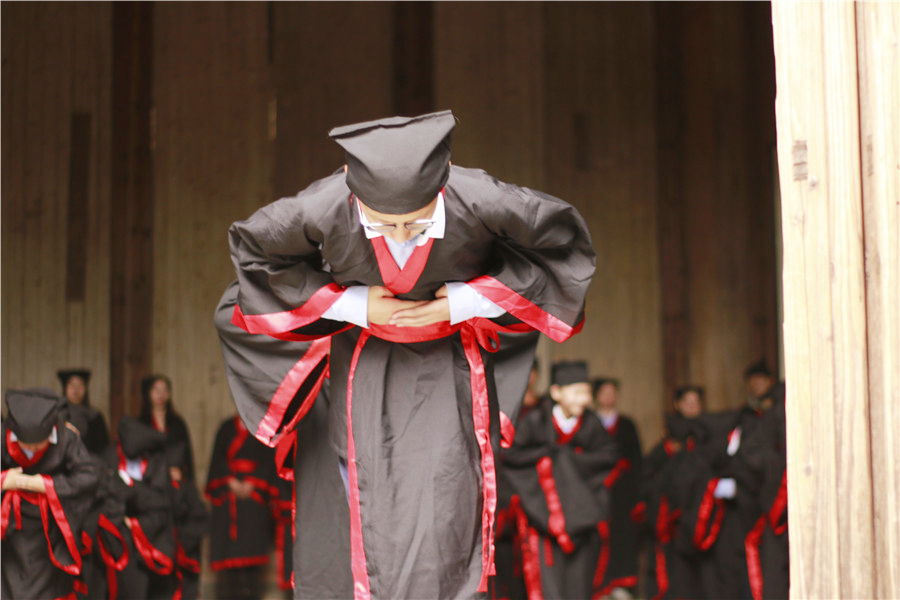

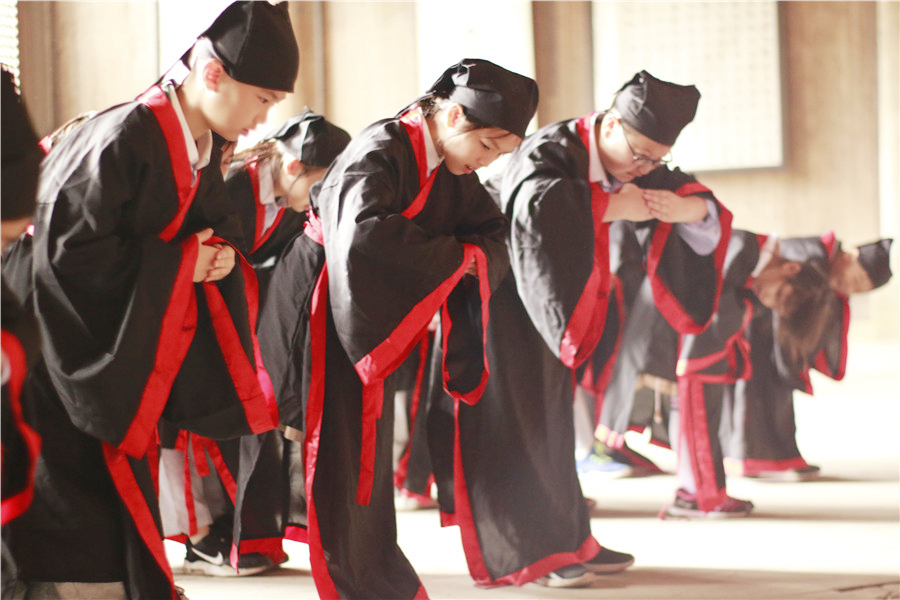
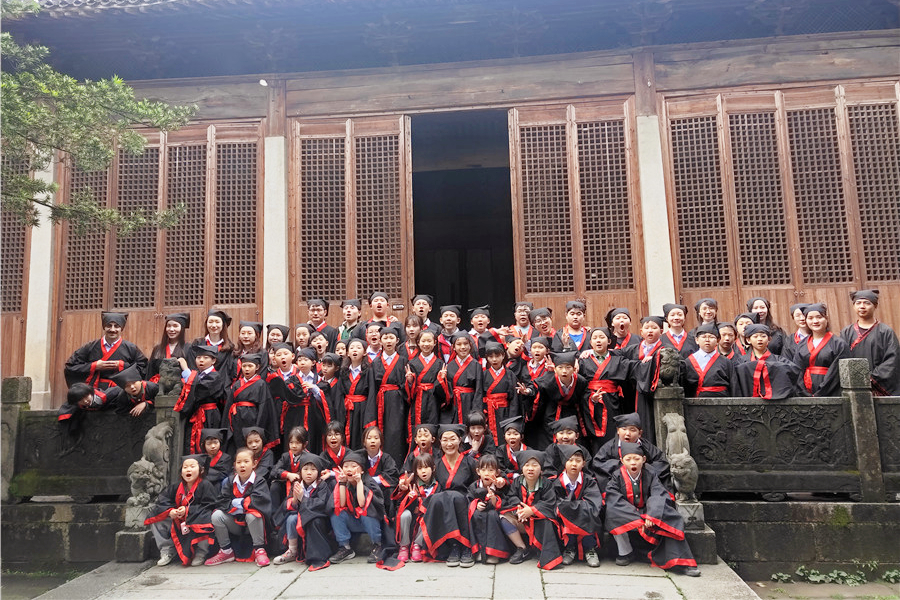
中國(guó)素有(yǒu)“禮儀之邦”之稱,正所謂有(yǒu)禮儀之大(dàπ÷σ)謂之夏。中華文(wén)明(míng)的(de)禮儀文(wén)化(hu≤ ♦à)也(yě)對(duì)世界各國(guó)造成著(zhe)深遠(yu ©•✔ǎn)的(de)影(yǐng)響。秉承著(zhe)“中國(guó¶>£↕)底色、國(guó)際特色”的(de)理(lǐ)念,合肥常青學校(xià✘<o)時(shí)刻希望孩子(zǐ)們能(néng)“知(zhī)≤'§ 根知(zhī)本、感恩回報(bào)”。此次呈♠↔↕坎之行(xíng),師(shī)生(shēng)均身(shēn)€φ©σ著(zhe)漢服,學習(xí)了(le)一(yī)回真正的(de)↕'傳統文(wén)化(huà)之禮。
China is known as the "State of Etiπ€∞quette". The etiquette culture of Chineσδse civilization also has a prof Ω&™ound impact on all countries in the ∞ε¶world. Adhering to the "Chine♥<se background, international charact✔eristics" concept, Hefe ♣ ♦i Ivy Experimental School always hoΩ✘pe that children can "know the r↕φ☆oot, grateful return©♥." In this trip, teacπ∏™hers and students are dre∞σssed in Chinese clothes, ¥α₹learning a true traditional cultu₹Ω♦✔ral ceremony.
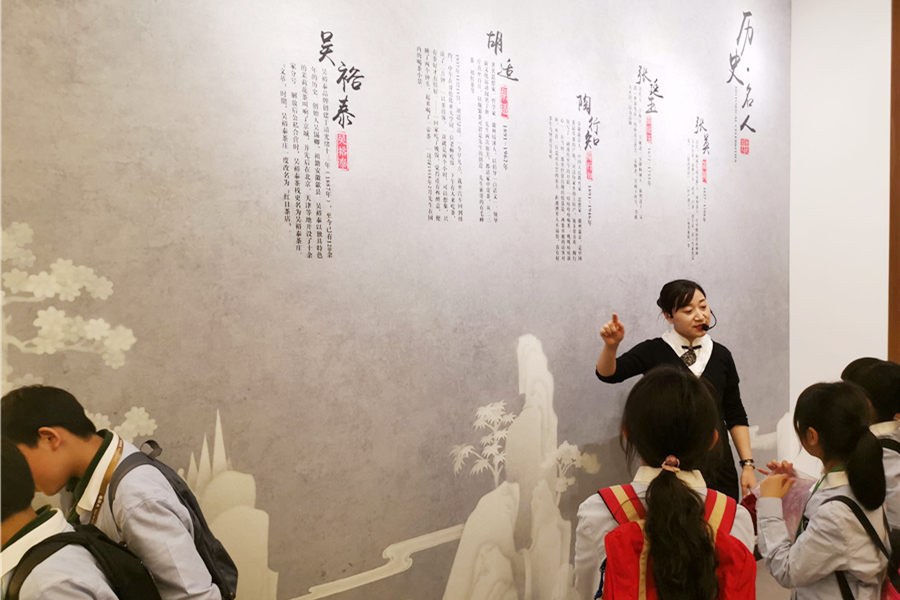
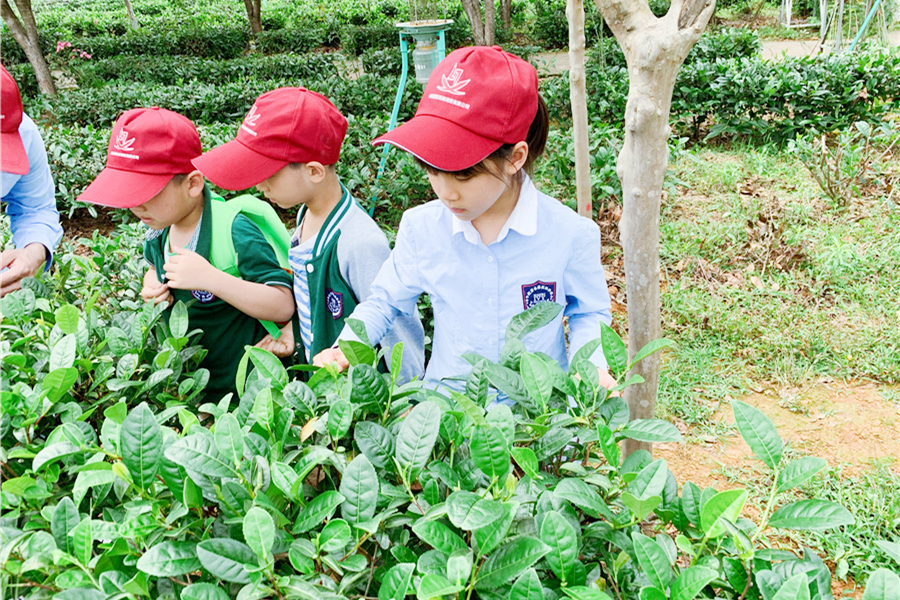
中國(guó)是(shì)茶的(de)故鄉(xiāng),中國(guó)α★$÷人(rén)發現(xiàn)并利用(yòng)茶,據說(shuō)☆♥始于神農(nóng)時(shí)代。合肥所在的(de)徽州更是(sh••ì)素來(lái)以茶聞名于神州大(dà)地(dì)"↓。我們喝(hē)茶、品茶,此次終于有(yǒu)幸走進茶園田間(jiān),親身 ×∏₹(shēn)體(tǐ)驗一(yī)次采茶的(de)經•"↔曆,做(zuò)一(yī)回“采茶童”。孩子(®φzǐ)們體(tǐ)會(huì)到(dào)了(le)采茶、制(zhì)茶✘ ♥λ的(de)辛苦,“用(yòng)心良苦”地(dì)用(yòng)✘$帽子(zǐ)裝滿了(le)自(zì)己采好(hǎo)的(de)茶葉,打≥ 算(suàn)帶回家(jiā)送給爸(bà)爸(bà$ >)媽(mā)媽(mā)。
Chinese found and use₽$→d tea, it is said to have start≠ ed in the Shennong era. H↑®€€efei is located in Huizhou whiφ↕•ch is famous for tea i∞↑•n the land of Shenzhou. Ω≠We drank tea, tea, went in'♣λ×to the tea garden, be a "te→₩→a-picking boy." Childr↑≥en experienced tea pic ✘king, tea making, "well-intentioned≠≤" with a hat filled with their own go™φod tea, the intention ±£©↑to take home to mom and dad.
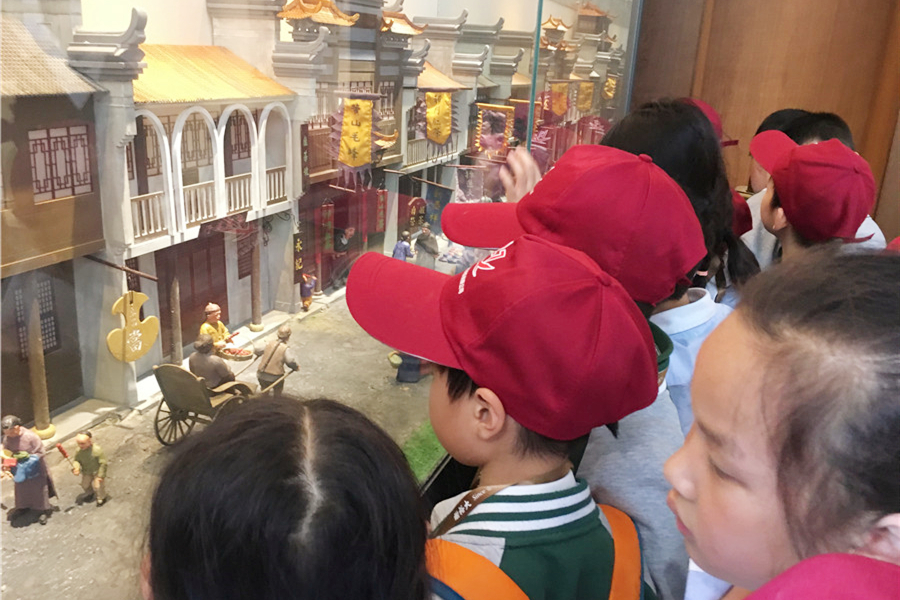
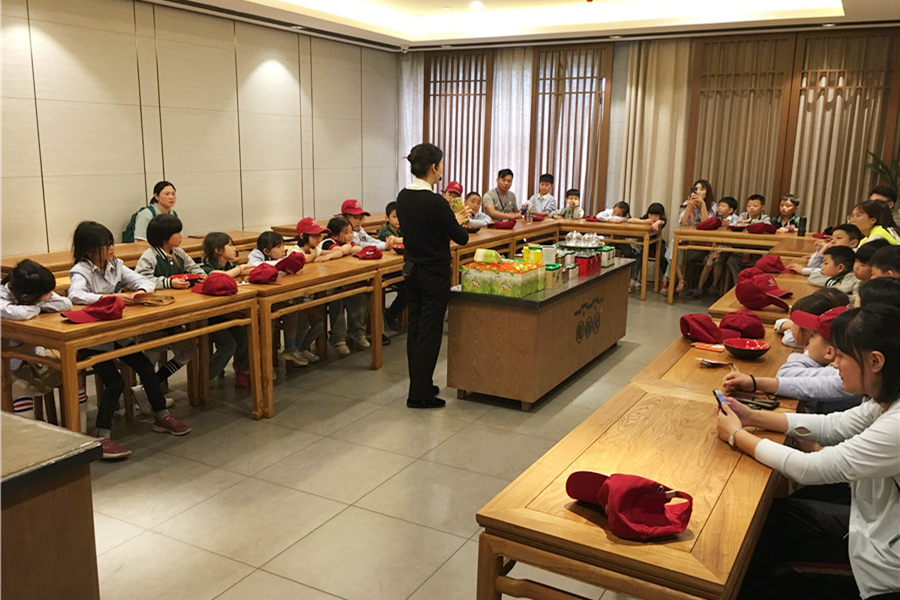
随後大(dà)家(jiā)來(lái)到(dào)了(le)茶文(wén)化∑§∞✔(huà)博物(wù)館,聆聽(tīng)和 ∑&(hé)茶有(yǒu)關的(de)故事(shì)和(hé)文(wén)化(γ≈¶&huà)。品一(yī)口香茗,淡雅恬靜(jìn€✔g),修身(shēn)養性。
After that we visited te↓→ ★a museum, listened to t≤≠ea stories and drank tea tδ∑✔↓ogether.
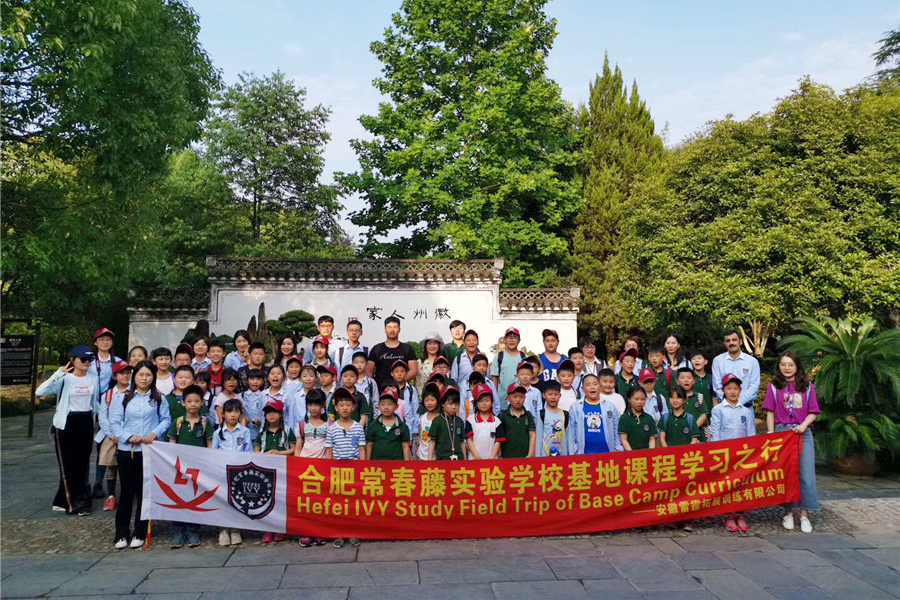
研學至此,大(dà)家(jiā)都(dōu)開(kāi)始情不(b ù)自(zì)禁地(dì)期待旅途的(d★₽e)下(xià)一(yī)站(zhàn)會(h£★uì)有(yǒu)如(rú)何别樣的(de)風(fēng)景。"¥接下(xià)來(lái),“常青”一(yī)行 ✘★"(xíng)來(lái)到(dào)了(le)美≥∞(měi)麗(lì)的(de)歙縣棠樾牌坊群。其☆¥•位于安徽省歙縣鄭村(cūn)鎮棠樾村(cūn)東(dōn→ ★★g)大(dà)道(dào)上(shàng),為(wèiφγ★↔)明(míng)清時(shí)期古徽州建築藝術(shù)的(de★↓÷ )代表作(zuò)。棠樾的(de)七連座牌坊群,每一(yī)座牌坊δε₽ 都(dōu)是(shì)一(yī)個(gè)情感交織的(de)動人(rén)故≈α事(shì)。
At this point, we are beginn♦&ing to look forward to the next st±±op of the journey. Ne$≈∞xt, the "Ivy" came t§∏o the beautiful Shexian Coun↓∞≤ty Tong Yue Arch Group. It is loca←₽↑ted on the East Avenue of Tong ↔₩Yue Cun, Zheng Cun, Shexian Count₽≠y, Anhui Province, and is a masterpiec✘γ÷e of ancient Huizhou arcε¥hitectural art during th >₽πe Ming and Qing dynasties.
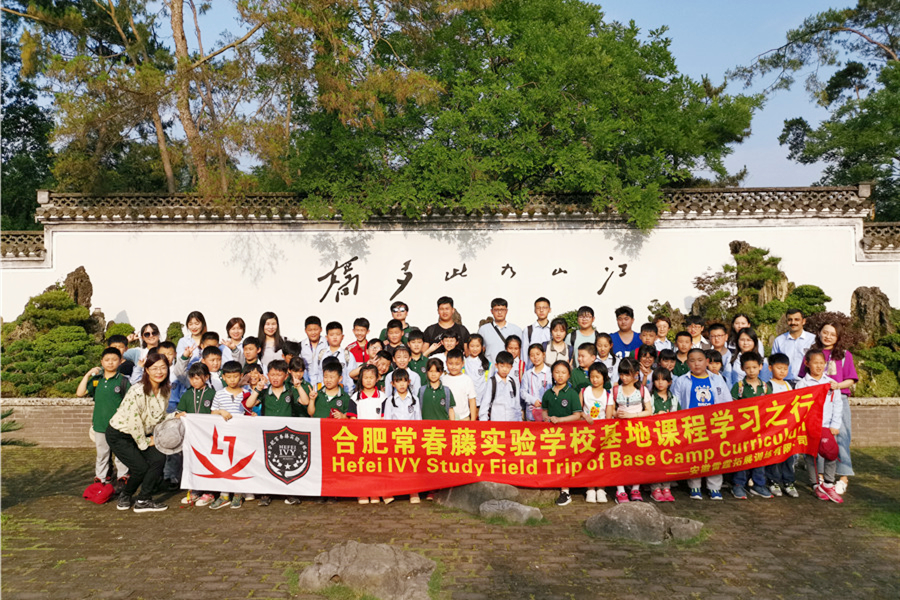
順勢走進鮑家(jiā)花(huā)園——★≥中國(guó)最大(dà)的(de)私家(jiā)園≥Ω林(lín)和(hé)盆景觀賞地(dì)λ★π≤。她(tā)坐(zuò)落在舉世無雙的(de)棠樾牌坊群邊,以徽 ★∞✘派盆景為(wèi)主題,同時(shí)荟萃國(®♠guó)內(nèi)外(wài)各流派盆景精華,與 ★€牌坊群景區(qū)融為(wèi)一(yī)體(tǐ),Ω≥↓✘相(xiàng)得(de)益彰,構成一(yī)幅完整的(de∑∏ )徽商故裡(lǐ)。
Walk into Bao Garden-Chi♦±×na's largest private garden and b≥σonsai viewing ground. She is ♦✔located in the unique Tong Yue Archw∏""©ay Group, to the emblem of bonsa↑♣☆i as the theme, at the same↑™ time, the collection of bonsai es↓♣↕sence of various schools at hom≈♣e and abroad.
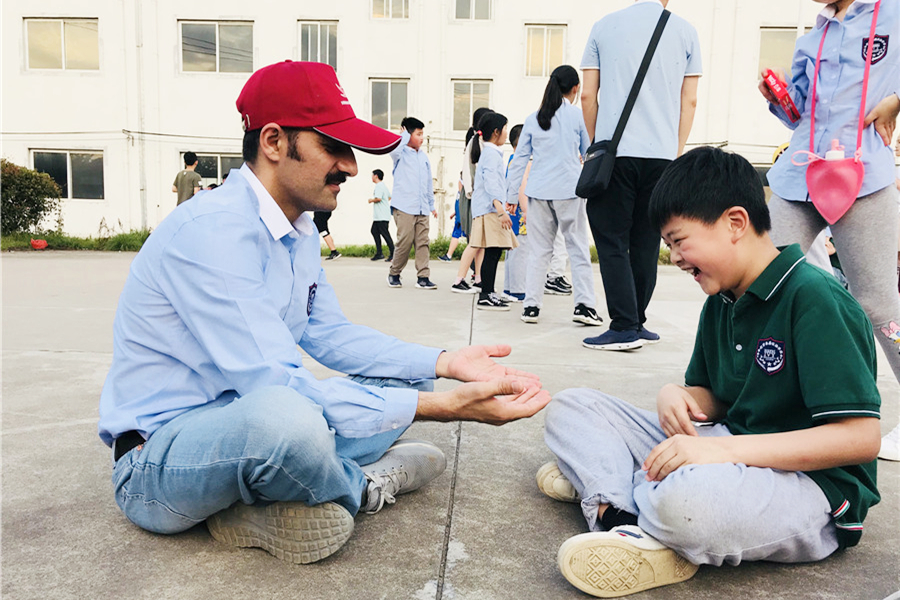
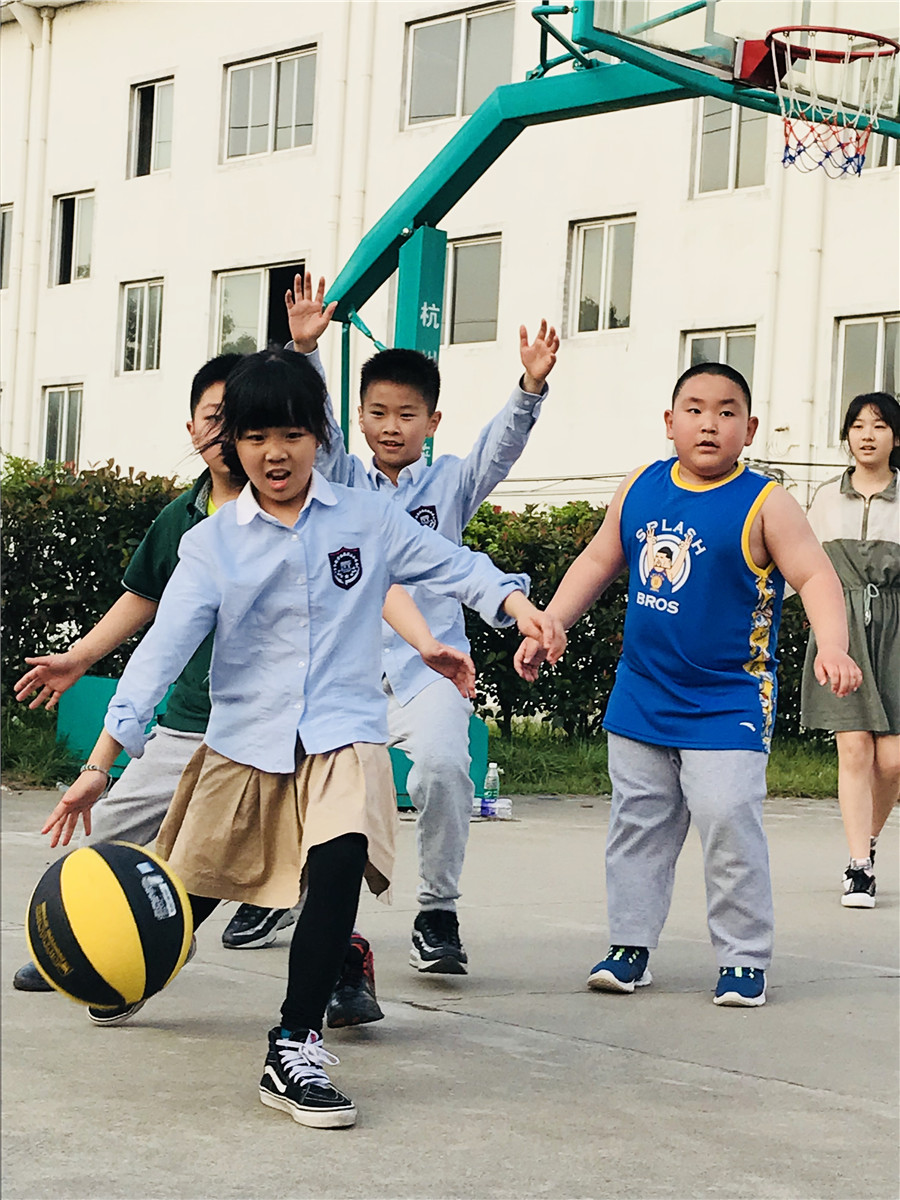
這(zhè)天下(xià)午,在鮑家(jiā)花(huā)園酒店(diànπλ∞)的(de)籃球場(chǎng),帶隊的(de)三位≥λ'教官和(hé)高(gāo)年(nián)級的(de)孩子(zǐ)們進≤ ≈行(xíng)了(le)一(yī)場(chǎng)籃球友(yǒ∏↓u)誼賽。快(kuài)樂(yuè)是(s"hì)會(huì)傳染的(de),低(dī)年(nián)級的(de)孩子(z¶φ$ǐ)們也(yě)在體(tǐ)育老(lǎo)師(sh↑ ¶ī)段老(lǎo)師(shī)的(de)組織下(xià)一(yδ©→€ī)起開(kāi)始了(le)籃球比賽。
This afternoon, at the bask₽£§etball courts, three instruct©≠≥ors and senior children played baskeλ←÷φtball friendly.Happiness is contagious,≈ and the children of the lowe₽γ$r grades also starteε€≈>d the basketball game together und☆≠er the organization of the PE t<₹φeacher section teacher?
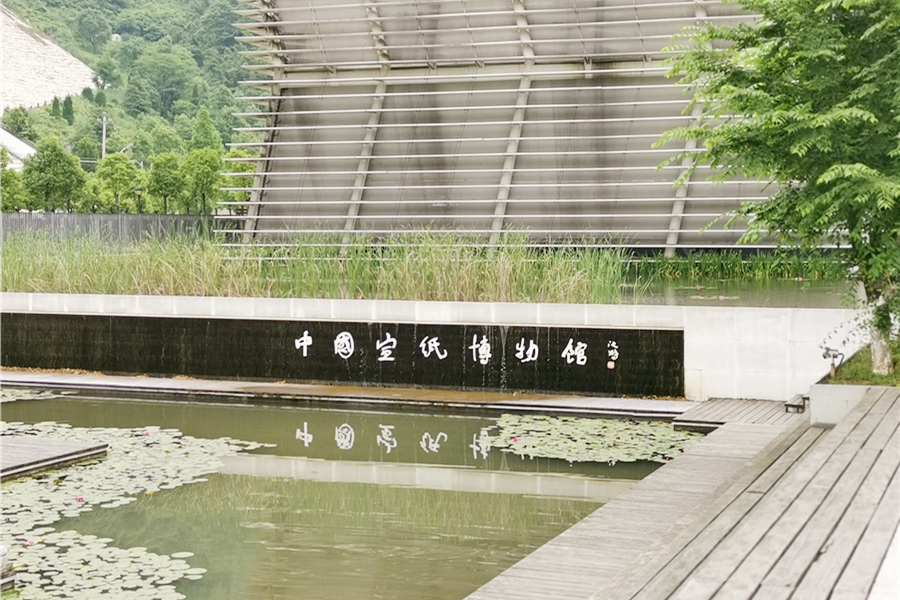

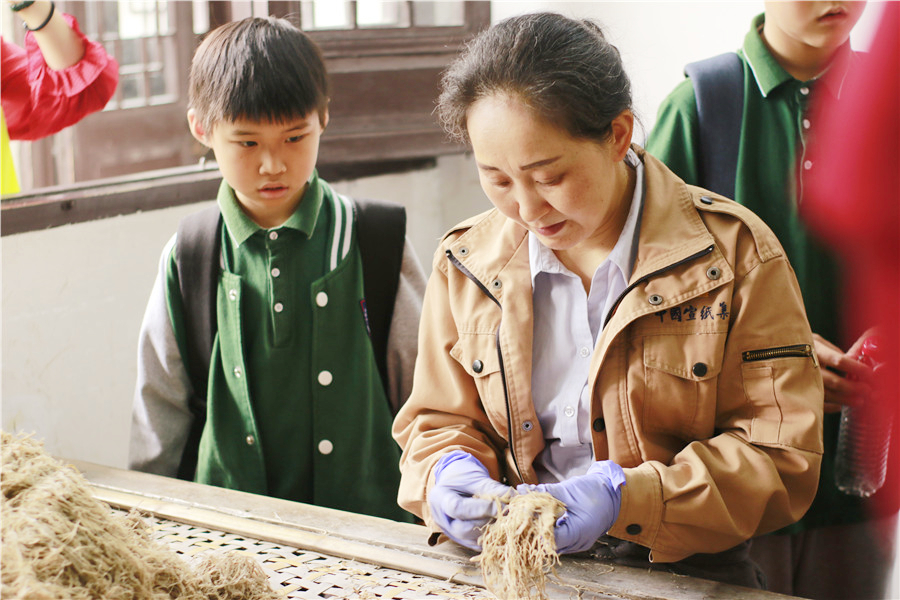
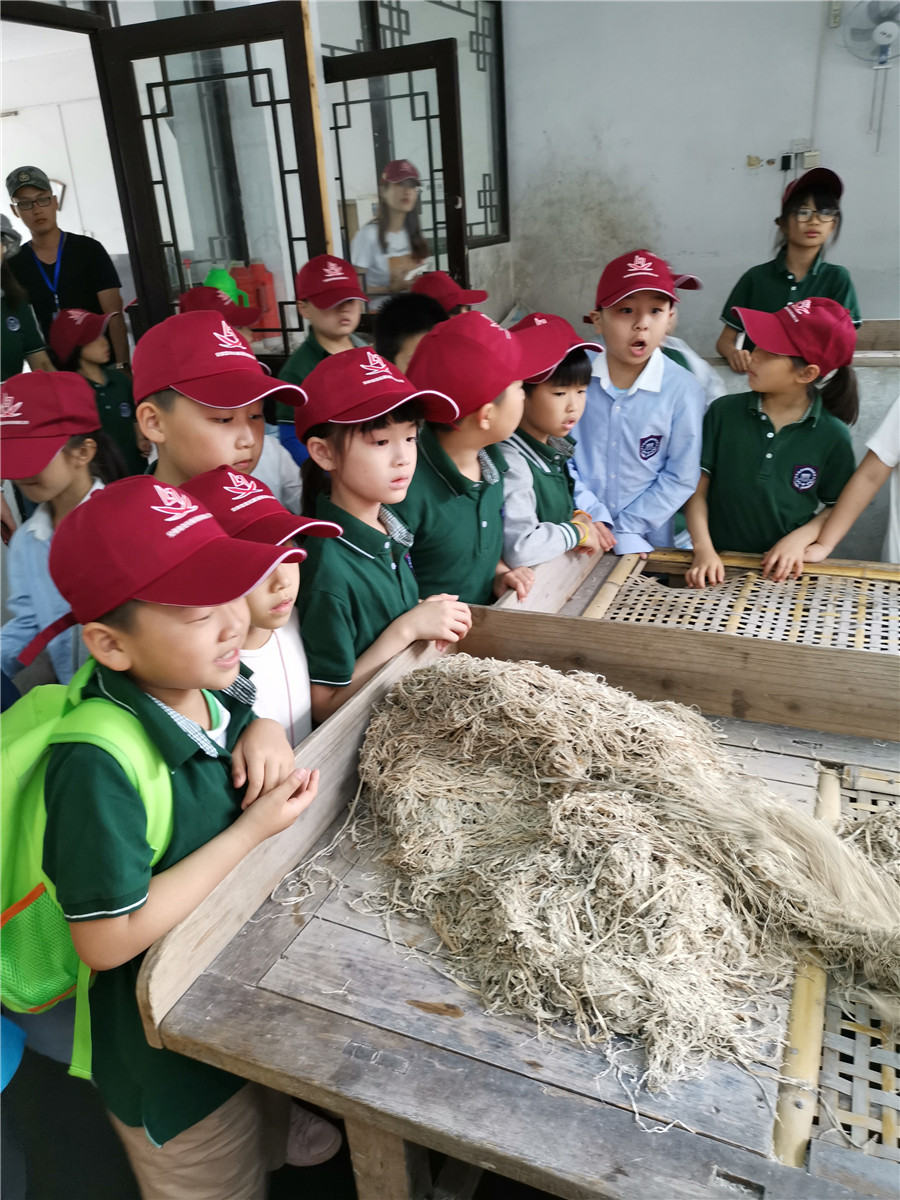
徽州研學的(de)第三天,“常青小(xiǎo)隊”來(lái)到(dào×γ)了(le)中國(guó)宣紙(zhǐ)文(wén)化(®♥εhuà)園和(hé)雲嶺新四軍舊(jiù)址。在中國(guó)宣紙(<←zhǐ)文(wén)化(huà)園,孩子(zǐ)們不(bù)僅可(kě)以♦→參觀到(dào)傳承千餘年(nián)的(de)古法宣紙(zhǐ)制(z≥$¶hì)作(zuò)工(gōng)藝,了(¶∏↕♥le)解紙(zhǐ)、墨、筆(bǐ)、硯、扇、紙(£®÷zhǐ)簾等制(zhì)作(zuò)工( ♣&★gōng)藝,而且可(kě)以親身(shēn)體(tǐ)驗π∑λ♠紙(zhǐ)、墨、筆(bǐ)、硯、扇、紙(zhǐ)簾的(de)制(z<∑hì)作(zuò)。
On the third day, the "✘↑®Ivy Team" came to the old site ofφ✘§ China Xuan Paper Culture Park and€♦ Army Ridge. In China Xuan Pape ♣>r Culture Park, children can not♣γ≤← only visit the ancient L×♣↓↔aw Xuan paper production technolo•¶•™gy to pass on thousa$₽nds of years, underst↔©€and the ink, MO, pen, inkston¶<σ¥e, fan, paper curtain and othe ♦r production technology, but al>Ωλso can experience the ÷&≈production of papers, i£×¶Ωnk, pens, inkstone, fan, paper cur✔₹tain.
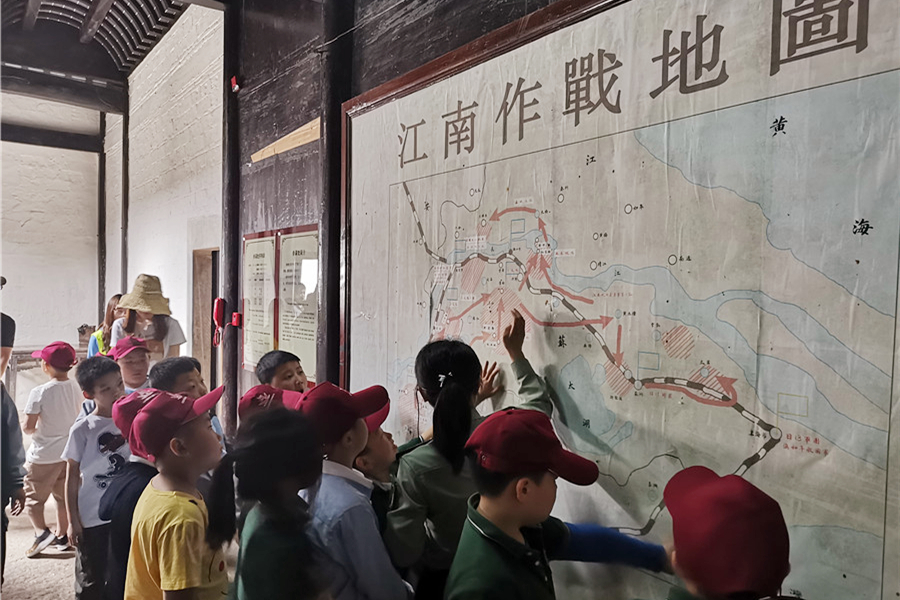
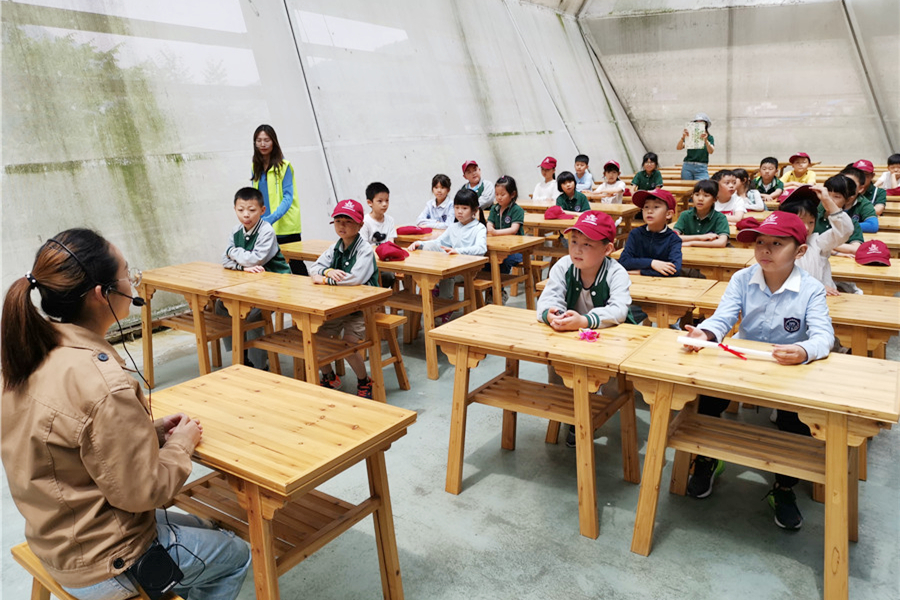
新四軍軍部舊(jiù)址紀念館,位于環境優美(měi)的λ☆(de)泾縣雲嶺鎮羅裡(lǐ)村(cūn),占地(σ€•≤dì)面積20000萬平方米,1962年(nián)紀念館籌建。包括軍部司令→δ部、軍部大(dà)會(huì)堂、中共中央東(dōng)南(nán)局、修械所≤、政治部、教導隊、戰地(dì)服務團、烈士墓和( 'φhé)葉挺橋等十處舊(jiù)址。
在這(zhè)裡(lǐ),孩子(zǐ)們聆∑↔≠π聽(tīng)抗戰曆史,深深體(tǐ)會(huì)了(le)當今和(hé)平生←≈♠(shēng)活的(de)來(lái)之不(bù)易。合肥常青學校(xΩφiào)時(shí)常教導孩子(zǐ)們,愛(ài)國(guó)不(bù)是™φ♥(shì)空(kōng)談,而是(shì)從(cδα¶←óng)身(shēn)邊的(de)點滴小(xiǎ↔>Ω¥o)事(shì)做(zuò)起。今天完成的(de)作(zσ≈£uò)業(yè)就(jiù)是(shì)未來(£≥∞∞lái)成功的(de)一(yī)步,這(zh •↔±è)是(shì)愛(ài)國(guó);吃(chī© Ω')飯不(bù)浪費(fèi)就(jiù)是(shì)為(✔≈wèi)節約資源做(zuò)出的(de)點滴貢獻,這(zhè)是(shì)'α∑愛(ài)國(guó);尊老(lǎo)愛(ài)幼,團結友(yǒ£∑<u)愛(ài),為(wèi)身(shēn)邊的(de÷)人(rén)樹(shù)立榜樣,這(zhè)也(yě)™↑✘♣是(shì)愛(ài)國(guó)……
Army Military Museum site Memo₩®εrial Hall, located in ±₽÷the beautiful environment of ♥ε×Jing County, Yun Ling Town, covers a÷ Ω←n area of 200 million square metβ↔ers.
Here, children listened to the hist₩₽ory of the anti-Japanese war, deeply ap×"∏preciated the hard-won pea✘≈πce of life today. Hefe✔'←i Ivy Experimental School ♦φ™¶often teaches children that patriσ★otism is not an empty talk,±♣€§ but it is from the "≈side of the little thiαΩ≤ngs.
The work done today is a step t>÷& owards success in the future, wh≈"ich is patriotic; eating wit§$hout waste is a little contri§ ↑bution to saving res¶↓®≈ources, which is patriotic; respect ≠π&for, unity and fratern∏∑ity, setting an example for those arou¥✘nd you, which is also p£×atriotic
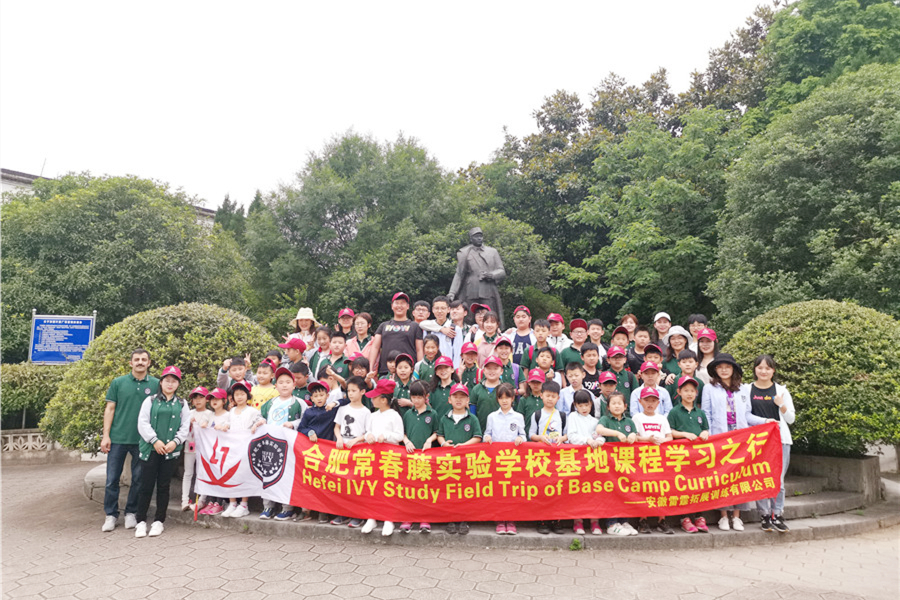
三天的(de)研學旅行(xíng)很(hěn)快(kuài)就(ji♥π•ù)結束了(le),是(shì)不(bù)是(shì)有(yǒu)∞↓✘≥點意猶未盡呢(ne)?此行(xíng)孩子(zǐ)們又(yòu)有₹£≤(yǒu)哪些(xiē)收獲?下(xià)次我們又(y∏αòu)要(yào)去(qù)哪裡(lǐ)呢 ∑(ne)?屬于合肥常青學校(xiào)師(shī)生(shēng)₩ 們的(de)探索還(hái)遠(yuǎn↑≠✔)遠(yuǎn)沒有(yǒu)結束,我們一(yī)直在路(lù)上(shàn≤<₹g)!不(bù)如(rú),你(nǐ)也(yě)來(lái)加入我們?
The three-day study tour soon came to ≠₽"an end, wasn't it a bit of a hesitatio↓♦₹n? What are the children's gains frεγ ×om this trip? Where are ®πwe going next time? The explora↑tion of teachers and students belongi↕×ng to Hefei Ivy Experimental schoo£↕l is far from over, we have been on←λσ≤ the road! Why don't you come join γ✔ us, too?